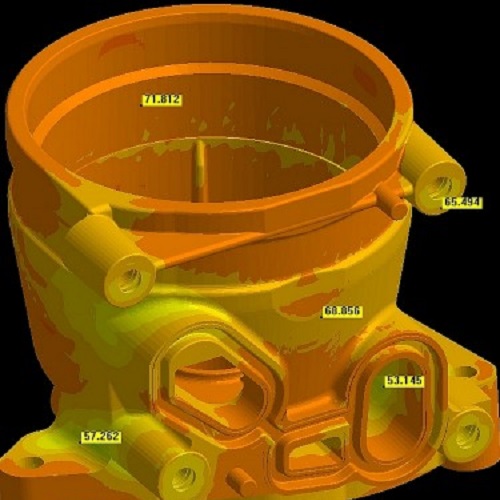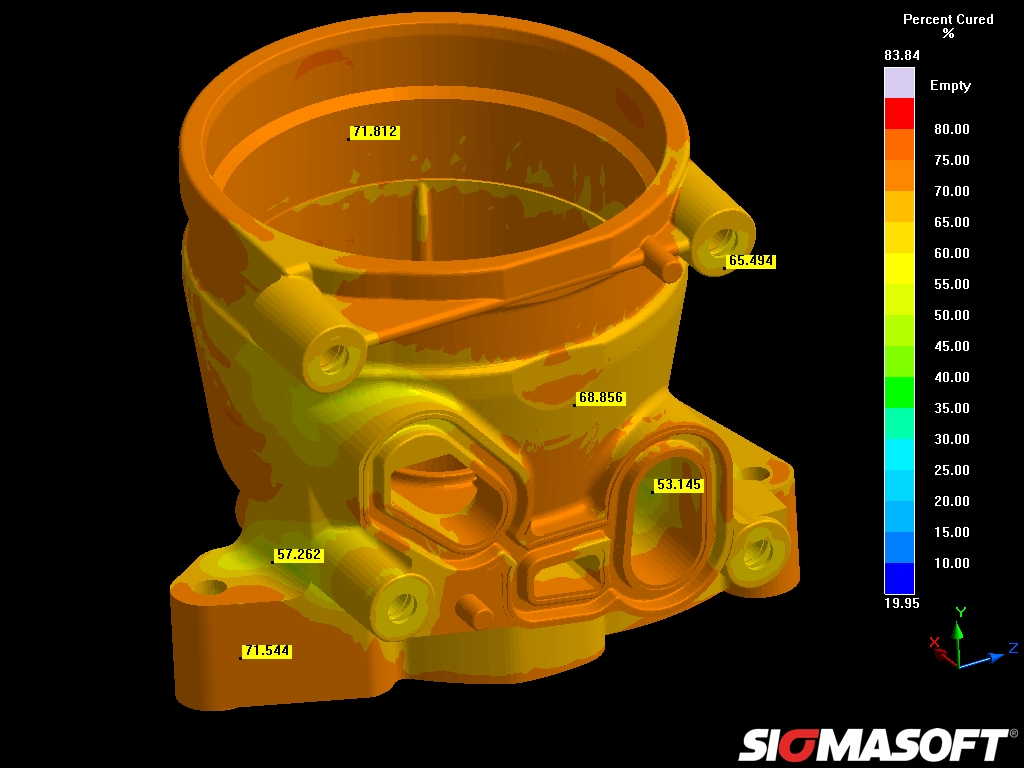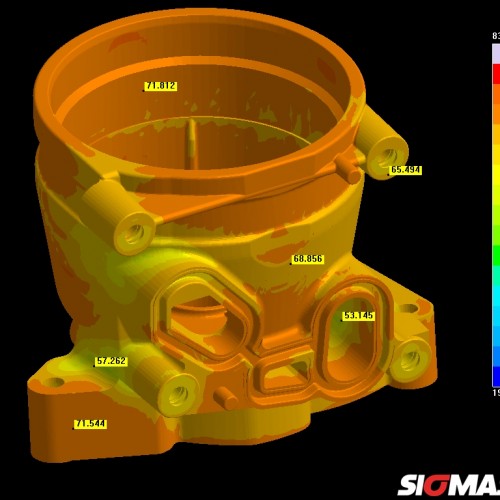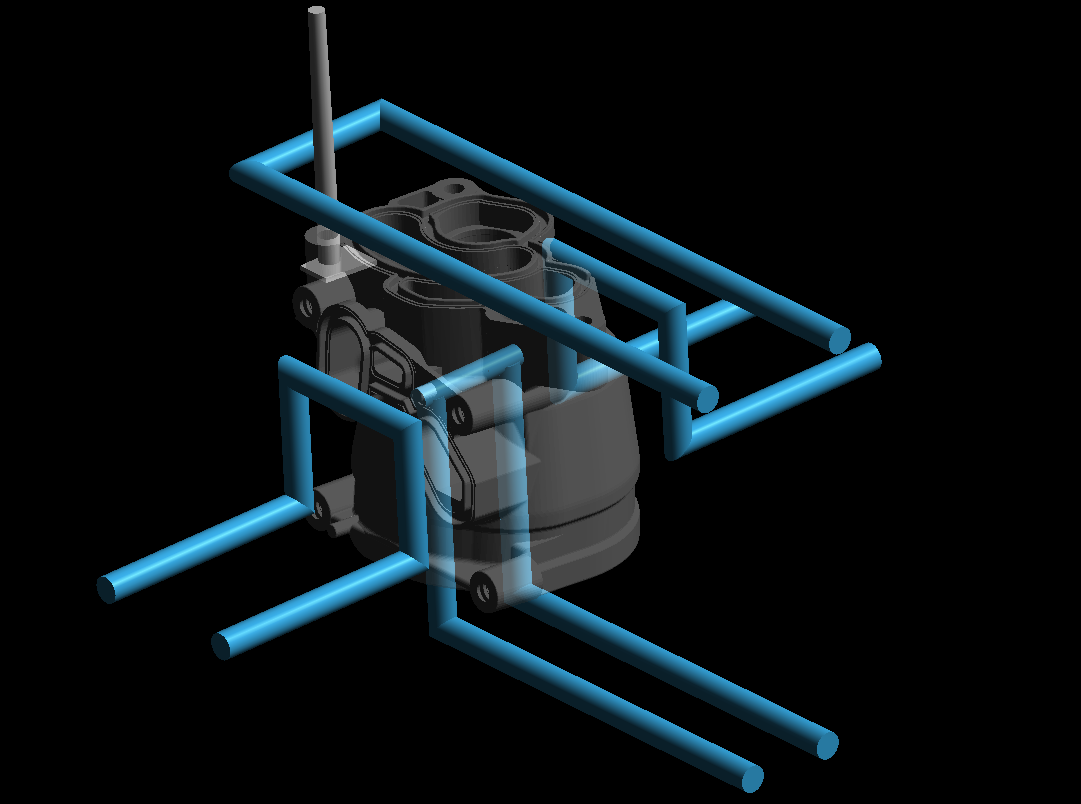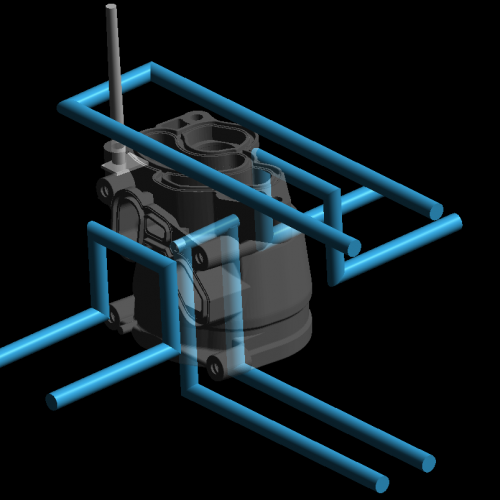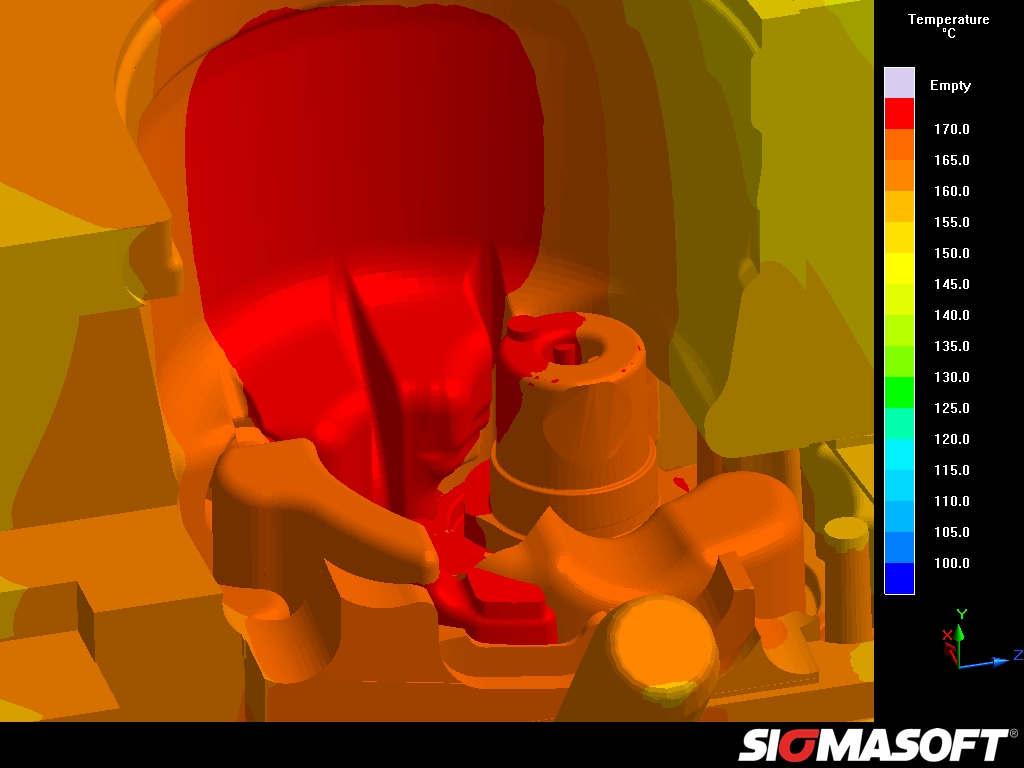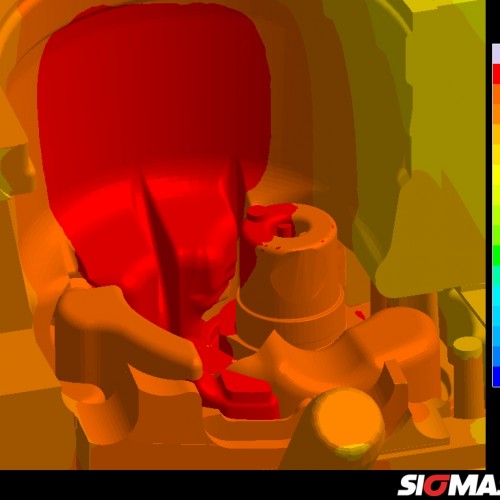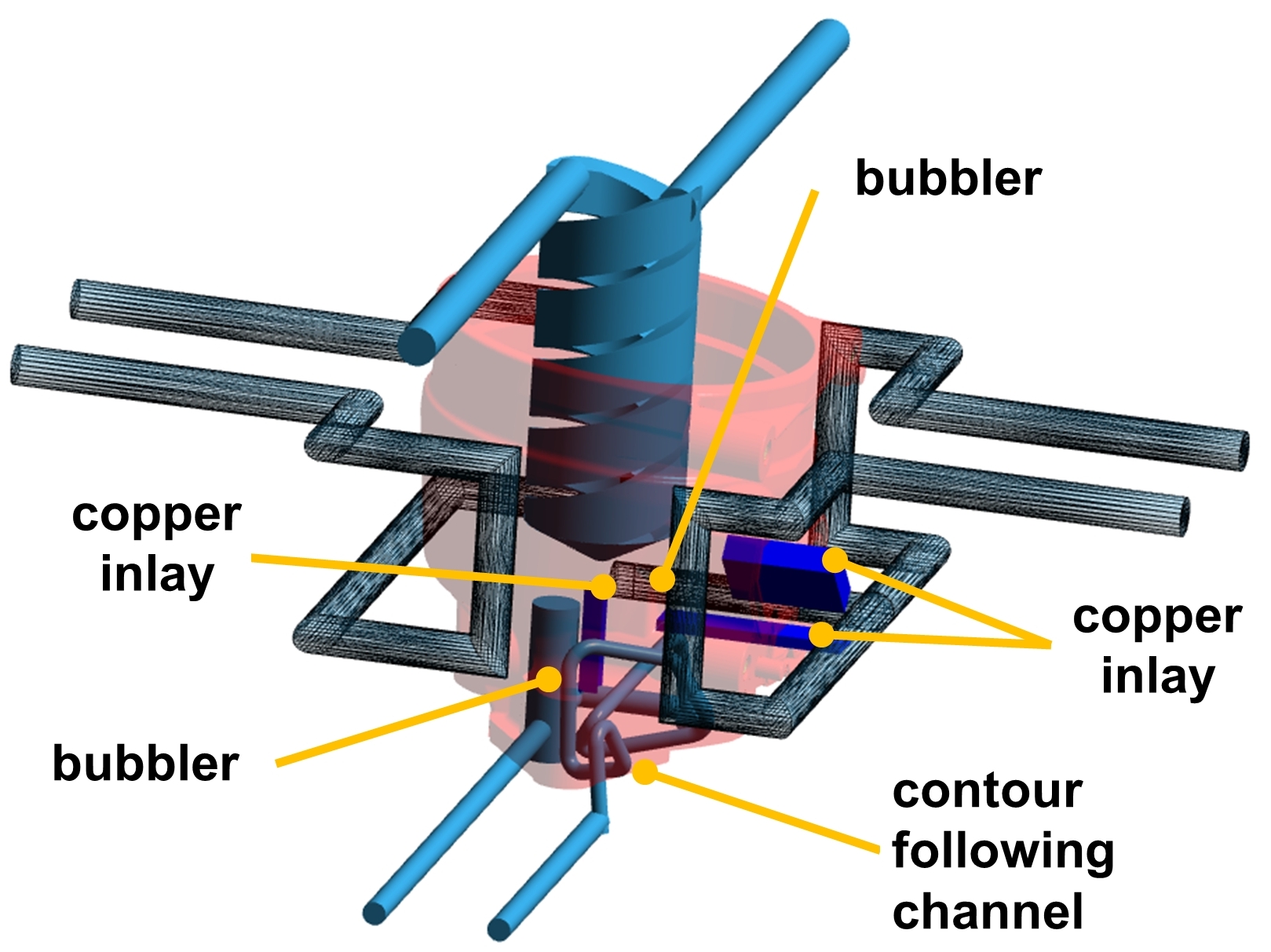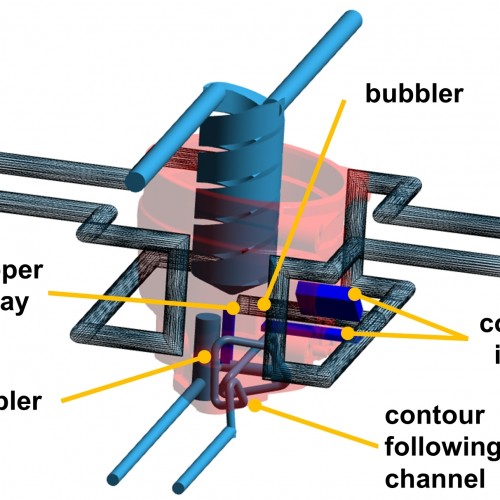An oil filter module was to be developed. As it was to operate in an automotive environment, a thermoset material was selected as the most suitable. SIGMASOFT® Virtual Molding was used to improve part design and to validate the mold concept proposed.
At the beginning, several gating positions were evaluated to choose the best compromise between flow length and weld line positioning. Also the cycle time required was calculated. The simulation proved that a filling time of 3 seconds delivered the best compromise between pressure loss and shear heating.
With a mold temperature of 180°C, a curing time of 70 seconds was required to reach a curing degree of 70%, as seen in Figure 1. Including mold opening and closing time, plus slide displacement, a cycle time of about 90s was required. With this information, assuming typical mold and machine costs, the cost of a single part was estimated to be around 3.50€.
After the part design was completed, a simple tempering layout was used, as seen in Figure 2. A simulation over several cycles proved that oil was not sufficient to heat up the mold and keep the required temperature level.
A next attempt was to use the same tempering layout, but with pressurized water at 190°C, instead of oil. The targeted temperature level was reached, but with large inhomogeneities, as seen in Figure 3. Due to the low-temperature regions in the cavity, an average curing degree of just 50% required almost 150 s of cooling time, 60 s more than the targeted cycle time. This increase in cycle time raised to costs in almost 30% per part – and after molding a tempering process was required to achieve complete curing.
To reduce the cost per part, an advanced tempering system, as seen in Figure 4, was proposed. In this case, the curing time was reduced substantially, so that the costs per part were only 5% more than the ones estimated in theory.
The advanced tempering system produced savings of more than 30.000€ per year.
